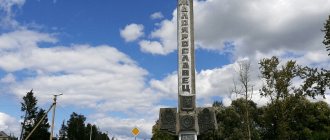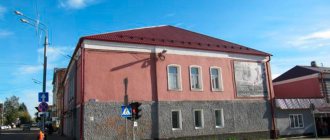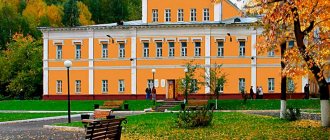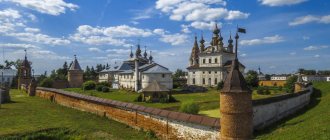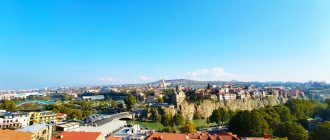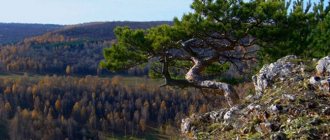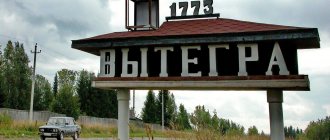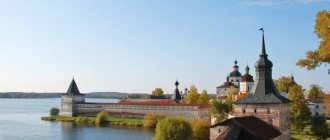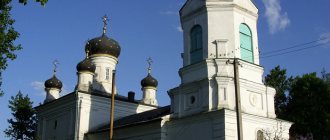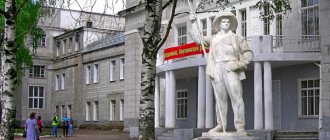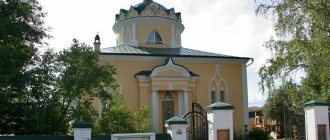Katav-Ivanovsk
The city of Katav-Ivanovsk is the administrative center of the Katav-Ivanovsky district of the Chelyabinsk region of the Russian Federation. The city has a population of 15,495 as of 2021.
The date of birth of the city is May 23, 1735.
Located in the Western foothills of the Southern Urals. The prevailing heights of the city are 500-600 meters above sea level. Katav-Ivanovsk is surrounded on all sides by mountain ranges. From the north - the "Stone Mountains" ridge, and from the north-east - "Katavskie Shishki".
Naked Shishka
To the east of Katav-Ivanovsk lies the Aksakarka ridge,
Aksakarka Ridge
and in the south - the "Dry Mountains".
Dry Mountains
The landscape of the city's surroundings, except for the mountains, is represented by a forest zone. Spruce-fir forests with an admixture of pine, larch and deciduous trees are ubiquitous here.
Forestry of Katav-Ivanovsky district
The city is washed by the waters of the Katav rivers from the north-west, the Raspberry Key - from the south-west and others.
Cataw River
The basic industries for the economy are the production of construction materials and mechanical engineering. The industry is represented by the following three, Katavsky Mechanical Plant LLC (manufactures, in particular, spare parts for the cement industry) and Katav-Ivanovo Instrument-Making Plant CJSC (the only manufacturer of magnetic compasses for ships in Russia).
Map
| Katav-Ivanovsk: maps |
Katav-Ivanovsk: photo from space (Google Maps) Katav-Ivanovsk: photo from space (Microsoft Virtual Earth)
| Katav-Ivanovsk. Nearest cities. Distances in km. on the map (in brackets along roads) + direction. Using the hyperlink in the distance , you can get the route (information courtesy of the AutoTransInfo website) | |||
| 1 | Trekhgorny | 17 (30) | NE |
| 2 | Yuryuzan | 19 (24) | NE |
| 3 | Ust-Katav | 20 (27) | WITH |
| 4 | Sim | 42 (52) | NW |
| 5 | Bakal | 43 (54) | NE |
| 6 | Maloyaz (Republic of Bashkortostan) | 47 (81) | WITH |
| 7 | Minyar | 54 (72) | NW |
| 8 | Mizhgorye | 58 () | YU |
| 9 | Satka | 63 (74) | NE |
| 10 | Asha | 64 (92) | NW |
| 11 | Berdyaush | 75 (107) | NE |
| 12 | Upper Kigi (Republic of Bashkortostan) | 77 (113) | WITH |
| 13 | Mesyagutovo (Republic of Bashkortostan) | 87 (132) | WITH |
| 14 | Beloretsk | 88 (156) | YU |
| 15 | Uchaly (Republic of Bashkortostan) | 90 () | SE |
| 16 | Uchaly | 90 (249) | SE |
| 17 | Arkhangelskoye (Republic of Bashkortostan) | 99 (255) | Z |
| 18 | Mezozerny | 100 (267) | SE |
| 19 | Kusa | 101 (131) | NE |
| 20 | Zlatoust | 104 (118) | NE |
| 21 | Krasnaya Gorka (Republic of Bashkortostan) | 108 () | NW |
| 22 | Iglino (Republic of Bashkortostan) | 114 (157) | Z |
| 23 | Novobelokatay (Republic of Bashkortostan) | 116 () | NE |
| 24 | Verkhneuralsk | 116 (310) | SE |
a brief description of
Located on the western slope of the Southern Urals, on the river. Katav (left tributary of the Yuryuzan), 36 km from the railway. Vyazovaya station, 321 km southwest of Chelyabinsk.
Territory (sq. km): 505
Information about the city of Katav-Ivanovsk on the Russian Wikipedia site
Historical sketch
In 1755, merchants Ivan Tverdyshev and Ivan Myasnikov founded an ironworks at the rich Bakal iron ore deposit on the river. Katav, which determined the name of the plant. Hydronym Katav from the name of the Bashkir tribe Katai, which lived in these places in ancient times.
From the end of the 18th to the end of the 19th century. was in the possession of the Russian noble family of the Beloselsky-Belozersky princes. The Katav-Ivanovsky plant (famous for its rails, which were made from Bessemer steel) was the center of the Katavsky mining district.
In 1914, a cement shop was put into operation.
Since 08/27/1933 the town of PGT, since 08/27/1939 the city of Katavsk-Ivanovsk, since 1935 - the center of the formed Katavsky district.
In 1941, the navigation equipment plant was evacuated to Katav-Ivanovsk from Leningrad, and the Kirov Defense Plant was evacuated from the Smolensk region.
Economy
Factories: foundry-mechanical (production of spare parts for cement industry enterprises), cement, instrument-making (ship instruments).
In the Katav-Ivanovo region, oats, barley, and wheat are grown. Dairy and beef cattle breeding.
Deposits of marble, marl.
Main enterprises
MECHANICAL ENGINEERING
OJSC "Katavmash"
456110, Chelyabinsk region, Katav-Ivanovsky district, Katav-Ivanovsk, st.
Zavodskaya, 1 Offers:
crushers
INSTRUMENT ENGINEERING
OJSC "Katav-Ivanovsky Instrument-Making Plant"
456110, Chelyabinsk region, Katav-Ivanovsky district, Katav-Ivanovsk, st.
Karavaeva, 45 Offers:
Navigation devices
FORESTRY INDUSTRY
OJSC "Katavsky Lespromkhoz"
456110, Chelyabinsk region, Katav-Ivanovsky district, Katav-Ivanovsk, st.
Ust-Katavskaya, 51a Offers:
Commercial timber
BUILDING MATERIALS INDUSTRY
OJSC "Katavcement"
456110, Chelyabinsk region, Katav-Ivanovsky district, Katav-Ivanovsk, st.
Tsementnikov, 1 Offers:
cement
Culture, science, education
Museum of Local Lore.
Museums, galleries, exhibition halls
Museum of Local Lore of the Katav-Ivanovsky Municipal District 456110, Chelyabinsk region, Katav-Ivanovsky district, Katav-Ivanovsk, st. Karla Marksa, 4 Phone(s): (35147) 2-07-37
Architecture, sights
Church of John the Baptist (1824) in the neo-Gothic style, the Beloselsky-Belozersky mansion, etc.
Monuments of industrial architecture, incl. factory pond dam.
8 from the village of Serpievo (Katav-Ivanovsky district), on the river. Sim - natural monument Ignatievskaya Cave.
| Population by year (thousands of inhabitants) | |||||||
| 1931 | 10.0 | 1996 | 22.8 | 2008 | 18.8 | 2017 | 16.1 |
| 1939 | 14.3 | 1998 | 22.2 | 2010 | 18.5 | 2018 | 15.9 |
| 1959 | 20.6 | 2000 | 21.8 | 2011 | 17.6 | 2019 | 15.7 |
| 1967 | 20 | 2001 | 21.4 | 2012 | 17.3 | 2020 | 15.5 |
| 1970 | 20.2 | 2003 | 20.2 | 2013 | 17.0 | 2021 | 15.4 |
| 1979 | 22.8 | 2005 | 19.6 | 2014 | 16.7 | ||
| 1989 | 25.0 | 2006 | 19.2 | 2015 | 16.6 | ||
| 1992 | 24.7 | 2007 | 19.0 | 2016 | 16.3 | ||
Katav-Ivanovsky district
Katav-Ivanovsky district borders on another subject of the Russian Federation - Bashkortostan.
As of 2021, the area had a population of 28,815.
In the city of Katav-Ivanovsky district you can rent housing. There are hotels and tourist centers, holiday homes.
The area is located in the foothills of the highest peaks of the Southern Urals. Among them, the highest peak of the Southern Urals is Yamantau - 1640 meters above sea level.
Mount Yamantau
Other peaks are above 1000 meters above sea level.
Mount Iremel is located 100 kilometers from the center of Katav-Ivanovsk. The second highest is 1576 meters above sea level. It is an object for active tourism.
Mount Iremel
The third peak of the Southern Urals - Bolshoy Sholom (1489 meters above sea level) is accessible for climbing from the Katav-Ivanovsky district. It is the top of the Zigalga ridge. Big Shalom is one of the most beautiful and inaccessible mountains of the Southern Urals.
Big Sholom
In the Katav-Ivanovsky district there is a unique natural site - Ignatievskaya Cave
with rock paintings from Paleolithic times.
In fact, it is a cascade of karst caves. There are about a hundred of them.
12 rivers flow through the territory of the Katav-Ivanovsky district. Including the Yuryuzan River.
Yuryuzan River
The flora is characterized by a combination of coniferous and broad-leaved forests.
The waters of mountain rivers and streams allow many species of fish to be found. Including two types of trout - grayling
and taimen.
Among the fauna, aquatic animals of interest are: otter, muskrat, European mink and beavers. In the forests you can find fox, elk, hare, raccoon dog, lynx, wolf and even bear.
One of the rare birds is the swan. Woodcocks, wood grouse and hazel grouse are not uncommon.
Swans on Katav-Ivanovsky Pond
Yuryuzan-News
Katav-Ivanovsk is located on the western slope of the Southern Urals, in the foothills of the highest peaks of the Southern Urals: Yamantau, Iremel, Bolshoy Shelom and others, on the river. Katav (left tributary of the Yuryuzan), 36 km from the railway. Vyazovaya station.
Story
Katav-Ivanovsk is one of the oldest cities in the mining region.
The city is named after the two Ivans, the founders of the plant, with the addition of the name of the Katav River. The hydronym, in turn, comes from the ethnonym of the Bashkir tribe Katai. Katay is a tribal association of Bashkirs. Its representatives are among the Kazakhs and Kyrgyz (Kirg. Kytai).
Simbirsk merchants and industrialists Ivan Borisovich Tverdyshev and his son-in-law Ivan Semenovich Myasnikov, having explored the rich Bakal iron ore deposit, founded an ironworks in 1755 on the bank of the Katav River in the Ufa district of the Orenburg province, in 1757 on the bank of the Yuryuzan River - the Yuryuzan-Ivanovsky hammer and blast furnace plant, and in 1758 at the confluence of the Katav River into the Yuryuzan River - the Ust-Katavsky Hammer Plant. In the first decades of its existence, the Katav-Ivanovsky plant was the leading plant in the Urals and the leading one in Russia in terms of productivity and quality of cast iron, surpassing Swedish and English blast furnace production. For 150 years, the plant was run by the mining owners of the princes Beloselsky-Belozersky (heirs of I.S. Myasnikov). The Katav-Ivanovsky plant (famous for its rails, which were made from Bessemer steel) was the center of the Katavsky mining district.
The production of especially strong rails from Bessemer steel was launched at one of the Katav-Ivanovo factories in 1880. The plant was then considered one of the best in Russia. Rails were supplied to England, as well as for the construction of the longest railway in the world - the Trans-Siberian Railway.
On the territory of the region in 1881, one of the first telephone lines in Russia was laid and operated for many years, connecting at that time the factory villages of Katav-Ivanovsky, Ust-Katavsky, Yuryuzan-Ivanovsky.
In 1890, the construction of the Samara-Zlatoust railway was completed, which was laid near the Katav factories.
In 1910, the emperor’s personal photographer visited Katav-Ivanovsk and took color photographs for the first time.
S.M. Prokudin-Gorsky. Katav-Ivanovsky plant. Factory pond and dam. Summer 1910
Sergei Mikhailovich Prokudin-Gorsky was one of the first in Russia to begin experimenting with the color of photographs. Russian Emperor Nicholas II became interested in the developed method of filming. In 1907, the Tsar ordered Gorsky to lead an expedition to create a photographic survey of what was then Russia. Prokudin-Gorsky traveled around eleven regions of the country and took thousands of photographs. Now all surviving photographs are stored in the Library of Congress.
S.M. Prokudin-Gorsky. General view of the Katav-Ivanovsky plant Summer 1910
In 1914, a cement shop was put into operation on the basis of rich marl deposits. The industrial giants of the first Soviet five-year plans, including the Magnitogorsk Iron and Steel Works, were built using Katav-Ivanovo cement.
At the same time, handicraft workshops for the production of agricultural implements and weighing equipment were opened in Katav-Ivanovsk.
In 1922, with the abolition of the Ufa province, the Katav-Ivanovskaya and Ust-Katavskaya volosts of the Ufa district were annexed to the Zlatoust district of the Chelyabinsk province, which, after the creation of the Ural region in 1923, was transformed into the Zlatoust district. On August 27, 1933 it received the status of an urban-type settlement. After the division of the Ural region into the Sverdlovsk and Chelyabinsk regions in 1934, in 1935 the Katavsky district was created as part of the Chelyabinsk region with its center in Katav-Ivanovsk, which received city status on August 27, 1939.
View of the Katav-Ivanovsky plant
During the Great Patriotic War, the Tula Arms Plant was evacuated to Yuryuzan; in 1941, the Leningrad Navigation Instruments Plant and the Kirov Defense Plant (Smolensk Region) were evacuated to the city of Katav-Ivanovsk. In 1967, a new cement plant was put into operation, today it is OJSC Katavsky Cement, part of the EuroCement holding. In 1942, the factory villages of Yuryuzan and Ust-Katav received the status of cities of regional subordination. On January 12, 1965, the Katav-Ivanovsky district was formed within the boundaries of the former Katavsky district. In December 1979, the city of Ust-Katav with the adjacent territory and several villages was separated from the Katav-Ivanovsky district into an independent administrative-territorial unit of the Chelyabinsk region. In 1997, the municipal entity “City of Katav-Ivanovsk and Katav-Ivanovsky District” was created.
Victory Memorial
House of Culture in the building of the former Church of John the Baptist
Katav-Ivanovsk and its attractions
In the city center, you should definitely visit the Kazan-Predtechensky Cathedral, which was built back in 1822. The temple is famous for its unique architecture, incorporating Gothic movements combined with a cross-domed style. The temple is under restoration. According to documents available in the Katav-Ivanovo Museum of Local Lore, there are only three such temples in the world. By the way, right opposite the cathedral there is an old mansion, also of interest to tourists. The Beloselsky princes used to stay in this mansion, and now it houses the Museum of Local Lore. It is interesting for its collection of ancient documents and a collection of utensils.
Kazan-Predtechensky Church
Museum of Local Lore (former mansion of the Beloselsky-Belozersky princes)
On the streets of Katav-Ivanovsk you can see many merchant houses that have preserved their unique architecture.
Katav-Ivanovsky district is a municipal entity in the Chelyabinsk region of Russia.
Coat of arms of the Katav-Ivanovsky district Date of adoption: 03.26.2003 Number in the Heraldic Register of the Russian Federation: 1208 Coat of arms of the Katav-Ivanovsky district: “In the edges of the scarlet (red) field - silver pillars; on top of everything there is a golden horseshoe with two spikes at the top and in it there is a silver druse with three crystals.” The authors of the coat of arms are Vladimir Shchukin, Yuri Sablin and Eduard Volkov.
Flag of the Katav-Ivanovsky district Date of adoption: 03/26/2003 Number in the Heraldic Register of the Russian Federation: 1209 The flag of the Katav-Ivanovsky district is a rectangular panel with a width to length ratio of 2:3, divided vertically into five unequal parts from the staff: red, white, red, white, red, respectively 1/5, 1/10, 2/5, 1/10, 1/5 of the length of the panel, bearing in the center a yellow horseshoe 7/9 of the width of the panel and a white one, about three druse crystals 4 /9 width of the panel.
The administrative center is the city of regional subordination Katav-Ivanovsk.
Head of the Katav-Ivanovsky municipal district Kirshin Evgeniy Yurievich.
Area - 3278 km2, agricultural land - 28.3 thousand hectares.
In the Katav-Ivanovsky region, coniferous forests of Siberia (spruce, fir, pine, larch, juniper) are combined with European and broad-leaved forests (oak, Norway maple, elm, linden, gray alder, black alder, steppe cherry). In the mountains of the Zigalga ridge, altitudinal zonation is observed. The beauty of the steep cliffs, mountain outcrops, stone rivers, and numerous caves is magnificent. The purest water of mountain streams, streams and rivers allows many species of fish to be found, the most popular and rare being grayling. Taimen, a river variety of trout, is also found in the rivers of the region. Among the aquatic animals in numerous tributaries there are otter, muskrat, European mink, and beavers. The flora is diverse.
Story
The district was formed on November 4, 1926.
Administrative division
The district includes 9 municipalities, uniting 19 settlements: Katav-Ivanovskoye urban settlement, Katav-Ivanovsk Yuryuzanskoye urban settlement, Yuryuzan Bedyaryshskoye rural settlement. Bedyarysh Verkh-Katavskoye rural settlement. Verkh-Katavka Forest rural settlement of the village of Sovkhozny Mesedinskoe rural settlement of the village. Meseda Oryol rural settlement. Orlovka Serpievskoye rural settlement. Serpievka Tyulukskoye rural settlement. Tyulyuk
Economy
The region is rich in mineral resources. Several dozens of various mineral resources have been explored and known in the area: iron and copper ores, bauxites, titanium-pyrkonium ore occurrences, magnesites, quartzites, marls (limestones for cement production and lime production), building stone, brick clays, sands and sandy gravels. mixtures, stramotolite limestones (ornamental and facing), dolomites, mineral paints, mineral waters, peat and others.
Agriculture is dominated by dairy and meat farming and poultry farming. The production of potatoes, vegetables, fruits and berries has been developed. Oats, barley, and wheat are also grown in the Katav-Ivanovo region.
The leading role in the sectoral structure of the economy is played by industry, which is the basis for the development of the region. The structure of production is dominated by dynamically developing sectors that are fundamental to the economy - production of building materials and mechanical engineering.
LLC "Katav-Ivanovsky Foundry"
The main enterprises of the district include: CJSC "Katavsky Cement" specializes in the production of various types of cement for the construction, oil production, and hydraulic industries. Seven types of Portland cement (grades 400-500) provide the entire range of cement consumption, and high-quality clinker obtained from marls from our own deposit guarantees strength and chemical characteristics. Katav-Ivanovsky Mechanical Plant LLC produces spare parts and equipment for the cement industry, industrial construction materials, mining and processing plants, ferrous and non-ferrous metallurgy. CJSC "Katav-Ivanovsky Instrument-Making Plant" is the only Russian manufacturer of magnetic compasses, logs measuring the distance traveled by ships and other navigation instruments for ships of the navy, as well as vessels of the Russian sea and river fleets, boats, boats and yachts. The production and production of unique goods for civil purposes (solenoid valves, pneumatic distributors for the gas and petrochemical industries), as well as consumer goods, has been mastered. In general, the plant's product range includes about 200 products.
Instrument-Making Plant
A number of enterprises carry out production activities on the site of the former Yuryuzan Mechanical Plant: Alba Chain LLC produces new products - chains for conveyors of metallurgical and electrical production, agricultural chains; LLC "Ural Plant of Non-Standardized Equipment"; LLC "Yuryuzan-Polymer"; Altair LLC
Production is expanding and new capacities are being introduced at Beer House LLC - construction of houses, components - log cabins, door blocks, etc.
Small business is one of the important factors of economic growth and a means of improving living standards.
Culture
The cultural life of the Katav-Ivanovsky district is diverse and multifaceted. It is especially vividly presented these days in the city, where various creative groups gather together: the ensembles “Krinitsy” and “Uralochka” present folklore songs, button accordion players led by Viktor Kholin from Orlovka delight listeners with their playing and songs, choreographic ensembles led by the famous “Engagement” "present their dances. Our masters of arts and crafts are known far beyond the borders of the region. Their embroidery, knitting, weaving from willow, bast, various panels, carpets, souvenirs made from natural materials, stone, clay toys, whistles do not leave anyone indifferent.
Palace of Culture Tsementnikov (photo from the archive)
All levels of education are represented in the district - from preschool to higher education. There are 36 educational institutions in the municipal educational system: 16 general education (6 secondary schools and 10 basic); 1 special (correctional) boarding school; 4 institutions of further education; 15 preschool institutions.
There are 2 vocational schools, 2 secondary specialized institutions, and 4 representative offices of universities in the district. The quality of education in the district meets state standards. A system of interdepartmental interaction to solve childhood problems has been established. Work is being carried out on psychological and pedagogical assistance to children and adolescents. Intensive work is being done to develop the giftedness of schoolchildren. Various forms of training are being tested (distance learning, specialized training, retraining, introduction of local history, early learning of computer science and a foreign language).
In the Katav-Ivanovsky district there are 37 cultural institutions, of which: 18 club institutions (2 Palaces of Culture, Leisure Center "October", 5 city clubs, 10 rural clubs); 16 libraries, incl. Intersettlement central regional library, regional children's library.
There are 2 medical and preventive institutions in the area: MU “Katav-Ivanovo Central Regional Hospital”; MU "City Hospital" Yuryuzani
Katav-Ivanovsky district and its attractions
The richest natural complex of the region. On its territory there are about one and a half dozen ridges with heights from 1000 m to 1300 m, length from 7 to 45 km and more than a hundred peaks with heights from 600 to 1300 m.
The Katav-Ivanovo region has beautiful natural landscapes, deep rivers, mineral springs, natural monuments, and has resources for mountain, water, speleological and other types of tourism.
Nature of Katav-Ivanovo region
Historical and natural monuments are of particular value. These are more than eight dozen caves, grottoes, karst sinkholes, wells, half of which were inhabited from the Paleolithic era to the Middle Ages. The area is attractive for tourism with its unique tourism resources. There are 11 natural monuments. In recent years, 8 more unique monuments of natural and cultural heritage have been prepared. Among them, declared in 1995 by Presidential Decree, is the monument of natural, cultural and historical heritage “Ignatievskaya Cave” of the Paleolithic era, in which 50 groups of rock paintings made by human hands 14.5 thousand years ago were discovered. In total, about 130 unique karst objects are known in the park, 12 of them were inhabited by humans.
If we talk about the main attractions, then they should first of all include the unique Ignatievskaya Cave. This natural monument is located 8 km from the village of Serpievka, on the Sim River.
Ignatievskaya Cave
It begins with the Mayskaya Cave, not far from the bridge in the village of Serpievka, on the road from Katav-Ivanovsk. Fifty meters later along a narrow, steep path above the Sim River, which roars below with a stormy stream, you find yourself in the Small Serpievsky Grotto. After another fifty steps there is the Kolokolnaya cave. Next is a passage under a stone arch through the Ring Rock. And you find yourself in the Big Grotto. Then the Water Cave, it is the lowest, the entrance is almost at the level of the river, at the end of it is a siphon (a narrow vertical well filled with water). Further caves are less frequent: Opened, White Queen, Through, etc.
There you can see rock paintings that have been preserved since the Paleolithic era. There you can also see samples of pottery and bones of ancient animals that were discovered in the cave. On the territory of the park around the Ignatievskaya Cave there are about a hundred more karst objects. If you like to relax actively, make a pilgrimage to Mount Iremel, located approximately 100 km from the center of the city of Katav-Ivanovsk.
Health improvement
Katav-Ivanovsky district is rich in resources of healing mineral waters. 315.36 million liters can be extracted per year. The mineral spring “Katavsky”, popularly called “Salty Key”, is located 4 km away. southwest of the city of Katav-Ivanovsk. The waters of the spring, according to the conclusion of the Sverdlovsk Institute of Balneology and Physiotherapy, can be used for bathing purposes. Radon waters can be used to treat the musculoskeletal system, circulatory system (coronary heart disease), nervous system (neuroses), and gynecological diseases.
Leisure
Tyulyuk River
Fans of active recreation can enjoy the Katav forests and rivers with unforgettable fishing and hunting. Those who go with a fishing rod to the banks of the Katav, Sim, Yuryuzan rivers will be able to become owners of a catch of chebak, perch, and pike. And those who are more patient and experienced will catch our local trout - grayling. In winter, guests can enjoy not only skiing and skating, but also ice fishing, famous in our area. In summer, you can enjoy catamaran rides on the waters of local ponds. Local residents like to relax outside the city, in nature: near the first and second rocks, near the Iron Bridge. Both adults and children, even those who cannot swim, can swim here.
Travel to Katav-Ivanovsk for the May holidays
I have been to Katav-Ivanovsk several times. This city is my father's birthplace. I have many relatives here. Among them is one of my friends. When I come to Katav-Ivanovsk, I stay with her. I visited her twice during the May holidays. Until the late nineties of the last century, my friend lived in her own house.
Ecotourism
Now she lives in a one-room apartment with all amenities.
On each of my visits, I walked around the city, as well as through the mountains covered with forest.
Surrounded by mountains, the city of Katav-Ivanovsk looks very picturesque.
The history of the city is interesting, and the life of my paternal ancestors is closely connected with it. Which prompted me to visit the local history museum every visit.
The last time I came to Katav-Ivanovsk was four years ago. I received an invitation from my relative and friend to come to Katav-Ivanovsk for her farewell to retirement.
Orlovka village and Katav river
From the bridge over the river there are wonderful views.
I don’t even want to leave!
The village church has the same original bell tower as in Ust-Katav , only with a blue roof.
The road to Katav-Ivanovsk “cuts” Orlovka almost in half. Opposite the local roadside store there was a landmark. I haven’t seen merciless Russian kitsch for a long time. And he is here. The house and gates are, of course, valid, but the BEAR!!! It's scary...
Such an inventor and entertainer lives in this house 
Museum of Local Lore
On the last day of April, my friend’s retirement ceremony took place. They had a fun time. Invited relatives and colleagues gathered in a cafe. A huge birthday cake was baked to order by the pastry chef. The table was richly set, everything was delicious. And salads and hot dishes. We walked until the morning.
The next day my friend and I went to the local history museum. The museum was opened in 1975 on a voluntary basis. In 1978, the museum became state-owned. Since 1990, the museum has been located in the former mansion of the Beloselsky-Belozersky princes. Representatives of this princely family owned the Katav-Ivanovo ironworks.
Memorial plaque at the entrance to the local history museum
The museum building is two-story, brick. It is an architectural monument of the 19th century.
local history museum of the city of Katav-Ivanovsk
The museum displays an exhibition of a 19th century living room with furniture from this period.
It also contains exhibitions of the interior decoration of townspeople's houses in different eras. In fact, the museum shows 200 years of the city's history.
Since 1999, the museums have opened a nature department. It has a hall dedicated to the Ignatievskaya Cave, located in the village of Serpievka, Katav-Ivanovsky district, Chelyabinsk region.
In addition, the museum has a rich collection of minerals and stone products.
LiveInternetLiveInternet
Tuesday, August 09, 2021 22:09 + to quote book
Katav-Ivanovsk is a city in the Katav-Ivanovsky district of the Chelyabinsk region of Russia.
The city is located on the Katav River (tributary of the Yuryuzan), 260 km from Chelyabinsk.
The city is named after the merchant and industrialist Ivan Tverdyshev and his son-in-law Ivan Myasnikov with the addition of the name of the Katav River.
Coat of arms
At the edges of the scarlet (red) field are silver pillars; on top of everything there is a golden horseshoe with two spikes up and in it there is a silver druse with three crystals.
The red color speaks of the rich history of the area and its fellow countrymen, of whom it is rightfully proud: these are ten Heroes of the Soviet Union, a holder of the Order of Glory of three degrees.
Red color is a symbol of courage, dedication, work, life-affirming force, holiday, beauty.
The main figures of the coat of arms are a horseshoe - a symbol of good luck and happiness, and a druse (fused crystals). allegorically showing minerals in the region - 16 different deposits and ore occurrences of minerals: brown iron ore, titanium, copper, bauxite, Lemesite marble, marl, magnesite, quartzite, etc. In addition, the horseshoe allegorically symbolizes the industry of the region, as well as the rivers Yuryuzan and Katav, “shackled” by factory dams.
Gold is a symbol of the highest value, greatness, wealth, strength, strength, generosity.
Heraldic figures - silver pillars allegorically show two rivers - Katav and Yuryuzan, and two cities on the territory of the Katav-Ivanovsk region - Katav-Ivanovsk and Yuryuzan, which gave economic development to the region.
Silver is a symbol of simplicity, perfection, wisdom, nobility, peace and mutual cooperation.
Katav-Ivanovsk is one of the oldest cities in the mining region. Founded in 1755 as a village during the construction of an ironworks on the river by merchants Ivan Tverdyshev and Ivan Myasnikov. Katav, which determined the name from the name of the Bashkir tribe Katai, which in ancient times lived in these places.
From the end of the 18th to the end of the 19th century. was in the possession of the Russian noble family of the Beloselsky-Belozersky princes. The Katav-Ivanovsky plant (famous for its rails, which were made from Bessemer steel) was the center of the Katavsky mining district. In 1881, one of the first telephone lines in Russia was located on the territory of the district and operated for many years, connecting at that time the factory villages of Katav-Ivanovsk, Yuryuzan and Ust-Katav.
In 1914, cement production was created on the basis of rich marl deposits. At the same time, handicraft workshops for the production of agricultural implements and weighing equipment were opened in Katav-Ivanovsk.
In 1922, with the abolition of the Ufa province, the Katav-Ivanovskaya and Ust-Katavskaya volosts of the Ufa district were annexed to the Zlatoust district of the Chelyabinsk province, which, after the creation of the Ural region in 1923, was transformed into the Zlatoust district. After the division of the Ural region into the Sverdlovsk and Chelyabinsk regions in 1934, in 1935 the Katavsky district was created as part of the Chelyabinsk region with its center in Katav-Ivanovsk, which received the status of an urban-type settlement in 1933. On August 27, 1939 it became a city.
During the war years, local enterprises received new development. The Leningrad Navigation Instruments Plant and the Kirov (Smolensk Region) Defense Plant were evacuated to Katav-Ivanovsk. This changed the profile of the area's businesses, which they retained after the war.
In 1967, a new cement plant was put into operation, today it is Katavsky Cement OJSC, part of the EuroCement holding.
The most famous historical and cultural monument in Katav-Ivanovsk is the Church of John the Baptist (Kazan Baptist Church). The majestic Church of John the Baptist, the main architectural landmark of the city, is located in the center of Katav-Ivanovsk. This is a unique temple. According to documents stored in the Katav-Ivanovo Museum of Local Lore, there are only three such temples in the world.
In 1824, in the village of Katav-Ivanovsky plant, the reconstruction of the Orthodox Church of St. John the Baptist was completed: in place of a wooden building, a stone one was built, reminiscent of a Catholic church. The Kazan-Predtechensky Church in Katav-Ivanovsk was built by Princess A. G. Beloselskaya-Belozerskaya. The architecture of the temple was familiar to the factory owners of the princes Beloselsky-Belozersky, many of whom served for a long time in Western countries. And their factory managers sometimes had the Catholic religion. The Kazan-Predtechensky Church in Katav-Ivanovsk was built by Princess A. G. Beloselskaya-Belozerskaya.
The attraction is the “Serpievsky Cave City”, which begins from the Mayskaya Cave, not far from the bridge in the village of Serpievka, on the road from Katav-Ivanovsk. Fifty meters later along a narrow, steep path above the Sim River, which roars below with a stormy stream, you find yourself in the Small Serpievsky Grotto. After another fifty steps there is the Kolokolnaya cave.
Next is a passage under a stone arch through the Ring Rock. And you find yourself in the Big Grotto. Then the Water Cave, it is the lowest, the entrance is almost at the level of the river, at the end of it is a siphon (a narrow vertical well filled with water). Further caves are less frequent: Opened, White Queen, Through, etc.
| Categories: | Cities of Russia/Starting with the letter *K* |
Cited 4 times Liked by: 3 users
Like share
0
Like
- 3
I liked the post - Quoted
- 0
Saved
- Add to quote book
- 0
Save to links
Liked3
0
Walking around the city
After the museum we admired the panorama of the city from the small mountains.
These mountains are formed by layered, pink limestones and diabases.
"Pink Rocks"
Pink limestones also form beautiful rocks, along which a railway line runs through the city, running from the Vyazovaya railway station to the Katav-Ivanovsk railway station building. The length of this railway line is 32 km.
There is a pond in the center of the city. The Katavsky pond certainly adorns the city, as does the Katav River.
Katav-Ivanovsky Pond
Katavsky Mechanical Plant LLC made a great impression on me. Here, for the first time, I saw with my own eyes what the entire territory of a large plant looks like from above. The plant is like a city within a city. Almost like in the film “Spring on Zarechnaya Street”.
View from the mountains to Katavsky Mechanical Plant LLC
I came close to the old, pre-revolutionary building of his Administration.
Among the architectural monuments, the Kazan Baptist Church is of interest. The founders of Katav-Ivanovsk erected the first wooden church in the village. It was consecrated in honor of John the Baptist, the heavenly patron of the two Ivans. In 1824, on the site of a wooden church, a two-story temple was built, unusual for Orthodox churches in architecture.
General view of the Katavsko-Ivanovo plant. Photo by Prokudin-Gorsky, 1910. The picture shows the Kazan Baptist Cathedral before the revolution
Funds for the construction of the church were allocated by Princess Anna Beloselskaya-Belozerskaya, who became the owner of the Katav-Ivanovsky plant. The upper (summer) church was consecrated in honor of the Kazan Icon of the Mother of God, the lower one in honor of John the Baptist. Therefore, the temple began to be called Kazansko-Predtechensky.
Kazan-Predtechensky Cathedral. What remains after the revolution and civil war
The temple also owned a chapel at the springs and prayer houses in the villages of Annovka, Bedyarysh, Verkh-Kataevka, Karaulovka and Lemeza.
House of Princes. The history of Katav-Ivanovsk through the lens of Prokudin-Gorsky
During the construction of the Samara-Zlatoust railway in the early 1890s, the Katav-Ivanovsky plant remained away from the highway. Only in 1905 was a special line built from Vyazovoy station through Yuryuzan to Katav-Ivanovsk. It was along this line that photographer Sergei Prokudin-Gorsky arrived at the plant. Engineering
The photographer dedicated nine photographs to the Katav-Ivanovsky plant, most of them taken outside the village. In these places the railway runs along the Cataw River through the cliffs and at their base. The photographer captured man-made cuts, exposed slates, and curved rails. Probably, the road builders had to work a lot with dynamite, blasting the rock: in one of the photographs, smooth layers of shale were exposed, in the other, the railway goes into a narrow man-made gorge. Sergei Prokudin-Gorsky was very fond of such views; they showed the skill of Russian engineers, their experience and knowledge, the large-scale work of builders and the power of nature that man had to overcome. At the plant itself, the photographer again met his favorite subject for photography - the railway bridge over the Katav River. Steel trusses, arches, and beams are woven together to form a work of engineering. The photographer went down to the river to capture the beauty of the bridge art.
At the Katav-Ivanovsky plant. Photo by S.M. Prokudin-Gorsky
The enterprise of two Ivans
Having crossed to the right bank, Sergei Prokudin-Gorsky climbed a small mountain, from which there was a good view of the entire plant, the dam, the village and the surrounding area. From here he took two pictures. In the first photo, under a blue sky with cumulus clouds, the blue surface of the factory pond, you can see the details of the dam, in the distance the gray roofs of the houses of the factory residents and incredibly wide streets. To the right of the dam there are pipes and workshops, there is no smoke coming from the pipes, no movement is visible at the plant, there is a whole field of slender woodpiles of firewood around the buildings. The photographer came here at the wrong time - the plant had not been operating for two years, production here would resume only in 1913, and then the plant would be repurposed from a metallurgical plant into a cement plant.
The history of the Katav-Ivanovsky plant began on May 23, 1755, when Empress Elizaveta Petrovna, by decree, authorized the construction of a new plant with a village on the banks of the Katav River. After this, Simbirsk merchants Ivan Tverdyshev and Ivan Myasnikov got down to business. Soon, “inside Bashkiria”, on land purchased from Bashkir elders for 780 rubles, the Katav-Ivanovsky plant appeared. It got its name from the river and the names of its two founders. On October 5, 1757, the first blast furnace of the enterprise was launched. Serfs from the Simbirsk province became working people.
In 1780, Ivan Myasnikov died, since after the death of his companion there were no direct heirs, the “mining empire” was divided between the merchant’s four daughters. The Katav-Ivanovsky plant, along with a number of other enterprises and mines, went to her daughter Catherine, to whom Empress Catherine II herself “appointed” a groom - State Councilor and State Secretary of the Empress Grigory Kozitsky. Then the enterprise went to the Kozitskys’ daughter Anna, it became her dowry during her marriage to Prince Alexander Beloselsky-Belozersky.
Excavation
near the Katav-Ivanovsky plant.
Photo by S.M. Prokudin-Gorsky. 1910 The Beloselsky-Belozerskys are a famous and ancient family, its roots go back to Rurik. At the time when Sergei Prokudin-Gorsky arrived at the Katav-Ivanovsky plant, the owner here was the prince and lieutenant general Konstantin Beloselsky-Belozersky.
He paid a lot of attention to the modernization of production. In 1862, the dilapidated dam was restored, new workshops were built, and the production of cast iron, molten and cast steel was increased. After the construction of the Samara-Zlatoust railway in 1891, the prince purchased equipment for the Bessemer factory, a rail rolling mill, and steam engines were installed in Belgium. Every year the plant produced more than one million pounds of railway rails for the Trans-Siberian Railway.
Church in the name of the prophet
The granddaughter of Ivan Myasnikov, Anna Beloselskaya-Belozerskaya, left a good memory of herself in Katav-Ivanovsk. The temple, albeit disfigured by time, and the mansion remind of her.
One of the photographs shows the center of the factory village, with the snow-white Church of St. John the Baptist rising here. It was a temple of incredible beauty and rare architecture; in the Urals you can no longer find a church with two bell towers. The temple was built according to the design of an unknown St. Petersburg architect in the style of classicism, hence the overall harmony and majesty that the porticoes on the facades, the colonnade on the bell towers, pilasters, rustication of the walls, and semi-circular windows gave the building.
Katav-Ivanovsky plant.
Photo by S.M. Prokudin-Gorsky. 1910
The church was built in 1824 at the expense of Anna Beloselskaya-Belozerskaya . The throne in the lower, heated floor was consecrated in the name of the Baptist of the Lord John, in the upper, cold, used in the summer, in honor of the Kazan Icon of the Mother of God.
The temple was closed at the peak of the anti-religious campaign in 1929, icons and utensils were confiscated, oil paintings were whitewashed, and the building housed a workers' club. In the 1930s, the upper tiers of the bell towers were demolished, giving the appearance of the church a resemblance to a Catholic church. Later, the building housed a cinema and a city museum. The temple was returned to believers in 1990; unfortunately, its unique appearance has never been recreated...
In the style of classicism
To the left of the temple in the photograph you can see the house of the Beloselsky-Belozersky princes. It, like the temple, was built in the 1820s. The estate was a whole complex, made in the style of classicism. The layout was based on the principle of a central-axial composition. There were two entrance alleys leading to the house for the passage of carriages. They went out to the lawns and flower beds in front of the main entrance to the house.
The main entrance to the two-story brick mansion was crowned with a closed terrace (bay window) on beautiful twisted cast-iron columns completed with figured arches. The architect decorated the second floor with columns with capitals connected by arches. The roof parapet and balcony were decorated with beautiful wrought iron grilles with floral openwork patterns.
The photograph shows that the mansion is surrounded by greenery; it was a real park, with a fountain babbling in it. Unfortunately, now almost nothing remains of this splendor: there is no longer a balcony, the garden has been cut down, and its territory is built up with garages. The cast-iron ornamental fence surrounding the estate has not survived either.
In 1883, during a big fire, when about 700 houses burned down in the factory village, the mansion was also damaged. The library was destroyed in the fire. After the fire, the house was repaired and a two-story stone building was added, where the factory office was located, and in Soviet times there was a trading house. Today this mansion houses a local history museum.
Two days in the city
Walking around the city lasted two days.
City center
Monument to the heroes of the Great Patriotic War - workers of the Katavsky Mechanical Plant
On the streets of the city you can see many preserved merchant houses. They have preserved their unique architecture.
Palace of Culture of Cement Workers
The most vivid impressions and beautiful photographs of the city panorama are obtained from the mountains around the Katav River.
Dam on the Kataw River. Water discharge
Walk through the mountains of Katav-Ivanovsk
Cataw River. Rocks and railway line to Vyazovaya
Railway bridge over the Katav
The trip to Katav-Ivanovsk ended with a visit to relatives. The program included a festive lunch and a bathhouse.
On my next visit I want to climb the mountains. I will look for guides among my friends. The Urals are not Caucasian Mineral Waters. The mountains of the Southern Urals look more severe than those of the Northern Caucasus. And there is no desire to walk along them alone, provided the routes are not marked. So the next trip to Katav-Ivanovsk will need to be prepared more thoroughly.
Museum guide. Katav-Ivanovo mansion of Rurik's descendants
On May 23, 1755, Empress Elizaveta Petrovna, by her decree, deigned to allow the construction of a new plant with a village on the banks of the Katav River. After this, Simbirsk merchants Ivan Borisovich Tverdyshev and Ivan Semenovich Myasnikov got down to business. Soon, “inside Bashkiria,” on land purchased from Bashkir elders for 780 rubles, the Katav-Ivanovsky plant appeared. It got its name from the river and the names of its two founders. On October 5, 1757, the first blast furnace of the enterprise was launched. Serfs from the Simbirsk province became working people. Intertwining of births
In 1780, Ivan Semenovich Myasnikov died. Since after the death of his companion there were no direct heirs, the “mining empire” was divided between the merchant’s four daughters. The Katav-Ivanovsky plant, along with a number of other enterprises and mines, went to her daughter Catherine, to whom Empress Catherine II herself “appointed” a groom - State Councilor and State Secretary of the Empress Grigory Vasilyevich Kozitsky.
The Kozitskys had two daughters, Alexandra and Anna. The latter inherited the Katav-Ivanovsky plant, which became her dowry upon her marriage to Prince Alexander Mikhailovich Beloselsky-Belozersky. The Beloselsky-Belozersky family is a famous and ancient family, its roots go back to Rurik, and it received its nickname from the Beloe Selo volost of Poshekhonsky district. Representatives of this family were famous military leaders, diplomats, factory owners and philanthropists.
In 1795, Prince Alexander Mikhailovich Beloselsky-Belozersky married 22-year-old Anna Grigorievna Kozitskaya, who had a rich dowry, for a second marriage. The prince himself was a writer, philosopher, senator, active privy councilor, member of the Academy of Sciences and the Academy of Arts. He served as a diplomat: envoy to Dresden and then to Turin, from where he was recalled for the “too idyllic nature” of reports about revolutionary events in France.
Princely estate
The house of the Beloselsky-Belozersky princes in Katav-Ivanovsk was built in the 1820s by Princess Anna Grigorievna Beloselsky-Belozersky. However, she herself was unlikely to be there, since she lived in St. Petersburg. The mansion was occupied by plant managers and their families.
The estate was a whole complex, made in the style of classicism. The layout was based on the principle of a central-axial composition. There were two entrance alleys leading to the house for the passage of carriages. They went out to the lawns and flower beds in front of the main entrance to the house.
The main entrance to the two-story brick mansion was crowned with a closed terrace (architects call it a bay window) on beautiful twisted cast-iron columns completed with figured arches. The second floor is also highlighted by columns with capitals connected by arches. The roof parapet and balcony were decorated with beautiful wrought iron grilles with floral openwork patterns. From the windows of the house one could see the majestic church in the name of the Holy Prophet, Forerunner and Baptist of the Lord John. The mansion was connected to the temple by an underground passage.
The house is also interesting inside. The main halls form a suite. A unique cast-iron staircase, decorated with end-to-end geometric patterns, led to the second floor. In the bay window full of light there was a winter garden. The house has preserved tiled stoves, elegant profiled ceiling cornices and lampshades.
In 1883, during a big fire, when about 700 houses burned down in the factory village, the mansion was also damaged. The library was destroyed in the fire. After the fire, the house was repaired and a two-story stone building was added, where the factory office was located, and in Soviet times there was a trading house.
On the back side of the house there was a balcony overlooking a beautiful garden. It was a regular park running down to the Cataw River. A fountain gurgled in the garden. Employees of the Katav-Ivanovo Regional Museum of Local Lore remember the gardener Grigory Salov:
“He loved his work very much, thanks to his efforts, many flowers and even roses grew in the garden, and the cellars of the manor’s house were filled with various pickles and jam. One spring, when the garden was in full bloom, it was a very frosty night. The gardener was not at a loss and burned fires all night, filling the area with smoke. He managed to save the garden. In the morning, when the plant manager, Grigory Ivanovich Kovalsky, went out into the garden and saw that his garden had not been damaged by frost, as a sign of gratitude he gave the gardener a jacket from his shoulder. Grigory Salov was very proud of this gift and wore the jacket on holidays. He was also buried in this jacket.
Unfortunately, now almost nothing remains of this splendor: there is no longer a balcony, the garden has been cut down, and its territory is built up with garages. The cast-iron ornamental fence surrounding the estate has not survived either.
Museum in the mansion
The last owner of the Katav-Ivanovsky mountain district from the Beloselsky-Belozersky family was Prince and Lieutenant General Konstantin Esperovich. He was born in 1843 in St. Petersburg. In 1862, he restored dilapidated dams, built new workshops, and increased the production of cast iron and puddling iron, annealed and cast steel. After the construction of the Samara-Zlatoust railway in 1891, he purchased equipment from Belgium for the Bessemer factory, a rail rolling mill, and installed steam engines at the factories. Every year the plant produced more than one million pounds of railway rails for the Trans-Siberian Railway. In 1917, the Katav factories were sold to the Beloretsk joint-stock company for 20 million rubles, and in 1918 they were nationalized. The prince himself emigrated to France, where he died in 1920.
After the revolution, the headquarters of the Whites and Reds, the Council of Workers', Peasants' and Soldiers' Deputies were located in the Beloselsky-Belozersky estate. They remember that local revolutionary Dmitry Petrovich Tarakanov was shot in the basement of the mansion (the central street of the city bears his name). Since 1920, the House of Intelligentsia, a library, evening and music schools were located here. In 1992, the building was transferred to the Katav-Ivanovsky Regional Museum of Local Lore. Today, exhibits and materials on the history of the city are presented here: unique quality samples of rails from the Katav-Ivanovsky plant, furniture from the 19th century, a treasure of 773 coins, the legendary Maxim machine gun and much more.
In 1999, by resolution of the Legislative Assembly of the Chelyabinsk Region, the mansion received the status of a cultural heritage site of regional significance. Restoration of the estate of the Beloselsky-Belozersky princes with a park, St. John the Baptist Church, underground passage, restoration of merchant buildings will undoubtedly attract tourists to the city.
Museum address:
Katav-Ivanovsk, st. Karl Marx, 4 Museum opening hours: Monday-Friday - from 9:00 to 17:00, Saturday - from 10:00 to 15:00 Telephone (35147) 2-07-37 E-mail

